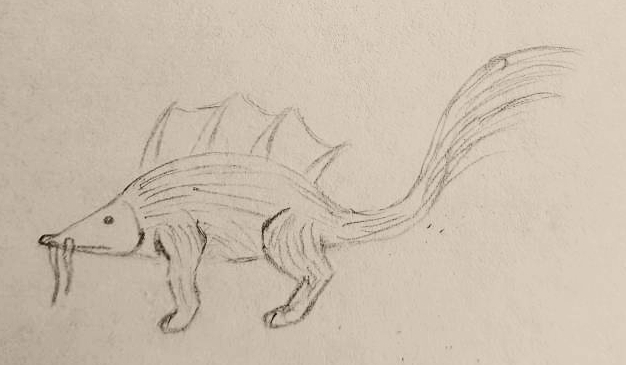Chelanin
A popular pet found throughout the Nimýric Empire.
Basic Information
Anatomy
Chelaniné are semi-aquatic fish, as indicated by the back fin.
They are stout quadrupeds with a long, fluffy tail that is almost as long as their body.
Their snout is pointed with four worm-like appendages, and their digitigrade legs end in short, round paws with retractable claws.
Except for the head and fin, their whole body is covered in fur.
Biological Traits
Numerous races of chelaniné are bred by the Nimýrité. There are many different fur and fin colorations to be found, as well as variations in the fur and feeler length. In general, domesticated chelaniné show brighter colors than wild ones.
Dietary Needs and Habits
Chelaniné feed on insects and small animals such as fish. They occasionally eat herbs for supplemental nutrients.
Additional Information
Social Structure
Wild chelaniné are solitary animals that rarely interact outside the mating season. Mothers care for their young until the latter are able to fend for themselves, but afterwards they go separate ways.
Uses, Products & Exploitation
The original purpose of domesticated chelaniné is to keep vermin in check, especially in rural areas. Nowadays, they are also kept as pets for company or representative purposes.
Geographic Origin and Distribution
Chelaniné are found throughout Gysuphun.
Average Intelligence
Domesticated chelaniné are known to recognize family members and frequent guests, and able to learn simple commands.
Perception and Sensory Capabilities
The wormlike feelers at the snout are packed with touch and smell receptors, helping the chelanin to detect prey animals in the water or ground. It also enables the animals to locate potential mates via pheromones.
Their eyes are small and play a minor role in perception.
They have no visible ears. The back fin and paws serve this role by picking up vibrations in the air and ground, respectively.
Lifespan
7 - 12 years
Average Height
25 - 40 cm
Average Weight
12-18 kg
Average Length
60 - 90 cm




Comments